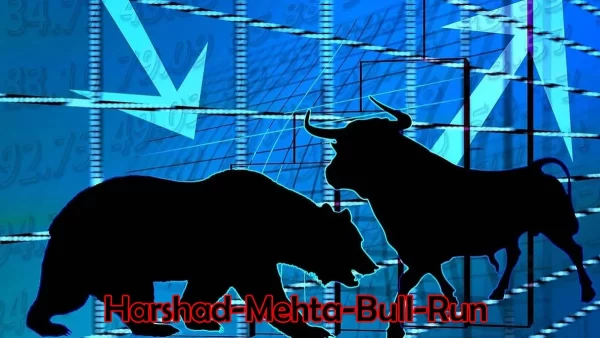In the early 1990s, Rajkot witnessed an unprecedented upheaval in its financial sector, as the city became an unwitting participant in the Harshad Mehta Bull Run. This exhilarating period, marked by rapid stock market growth and unforeseen consequences, has etched itself indelibly into Rajkot’s financial history.
Harshad Mehta: The Maverick Stockbroker
Harshad Mehta, a charismatic and daring stockbroker, was at the forefront of this financial whirlwind. His audacious strategies and unconventional tactics earned him the moniker “Big Bull,” a testament to his ability to manipulate markets with precision.
The Genesis of the Bull Run
The Bull Run found its origins in the late 1980s, fueled by a series of events that led to a surge in stock prices. Mehta’s ingenious idea of using bank receipts to inflate stock values set the stage for an unprecedented rise in the market, drawing in scores of investors, both seasoned and novice.
Rise and Roar: The Phenomenon Unleashed
As Mehta continued his audacious maneuvers, the stock market soared to unimaginable heights. Rajkot, with its vibrant financial community, became a major hub for trading activities, attracting both national and international attention.
Rajkot’s Financial Metamorphosis
The influx of wealth brought about by the Bull Run transformed Rajkot’s financial landscape. Grand buildings, luxury cars, and extravagant lifestyles became emblematic of this period of economic exuberance.
The Downfall: A Sudden Halt
However, every boom is invariably followed by a bust. The Bull Run came crashing down as abruptly as it began. Investigations revealed the extent of Mehta’s manipulations, leading to a seismic loss of confidence in the market.
Lessons Learned: Regulatory Reforms
The Harshad Mehta Bull Run exposed glaring loopholes in the regulatory framework. In its aftermath, sweeping reforms were implemented to fortify the financial sector, ensuring greater transparency, accountability, and resilience.
Legacy of the Harshad Mehta Bull Run
While the Bull Run left a trail of devastation, it also catalyzed the evolution of Rajkot’s financial ecosystem. It paved the way for a new era of prudent investing, risk management, and ethical conduct, shaping the city’s financial future.
Shaping a Resilient Financial Future
In the wake of the Bull Run, Rajkot emerged as a symbol of resilience and rejuvenation. Today, its financial sector stands stronger than ever, a testament to the enduring spirit of adaptation and growth.
Conclusion
The Harshad Mehta Bull Run remains an indelible chapter in Rajkot’s financial narrative. It was a period of unprecedented highs and sobering lows, a saga that forever altered the city’s financial trajectory. As Rajkot continues to stride forward, the lessons learned from this tumultuous chapter serve as a guiding light, illuminating the path to a more robust and responsible financial future.
FAQs
1. What was the Harshad Mehta Bull Run?
The Harshad Mehta Bull Run was a period of rapid stock market growth and subsequent downfall, orchestrated by the charismatic stockbroker Harshad Mehta.
2. How did the Bull Run impact Rajkot’s financial sector?
The Bull Run transformed Rajkot’s financial landscape, bringing unprecedented wealth and attention to the city’s market activities.
3. What led to the downfall of the Bull Run?
Investigations revealed manipulations in stock values, leading to a loss of confidence and a swift end to the Bull Run.
4. What lessons were learned from the Bull Run?
The Bull Run highlighted the need for regulatory reforms, resulting in measures to enhance transparency and resilience in the financial sector.
5. How has Rajkot’s financial sector evolved since the Bull Run?
Rajkot’s financial sector has embraced reforms, emerging stronger and more resilient, guided by the lessons of the Bull Run.

